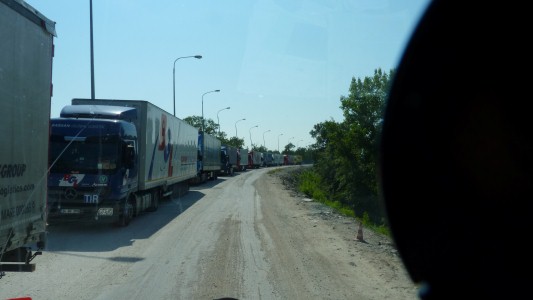

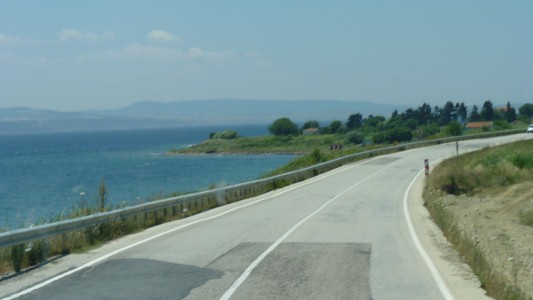
The narrow stretch of water leading to Istanbul and the even narrower Bosphorus. Gateway to the Black Sea.
Russia's only ice free ports.
A very strategic stretch of water for all sorts of reasons.
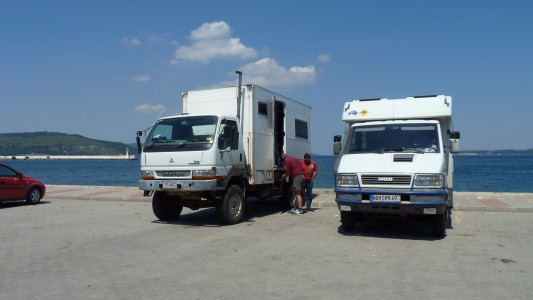
Exactly where the gps coordinates said they would be.
Peter and Margaret.
Friends from Aus with a German motorhome.
After their somewhat rapid drive from Germany.

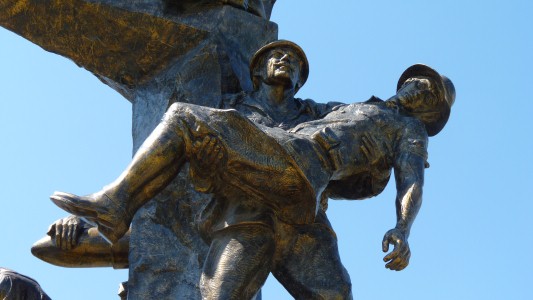
This image of Turk carrying injured Aussie is repeated in several places.
Also repeated is the image of legendary Turkish Corporal Seyyit who carried 180kg shell up steps to the battery when a shell crane was damaged.
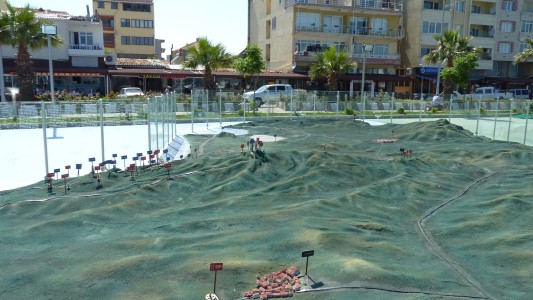
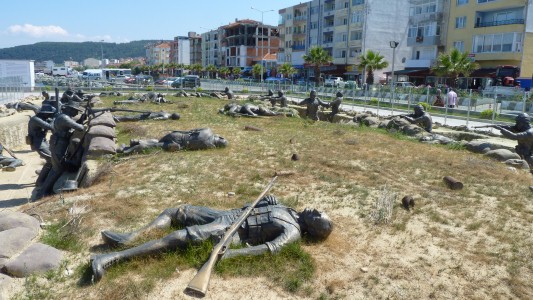
Trenches 8m apart.
Life expectancy ... about 3 minutes.

Three large herds of goats passed through.
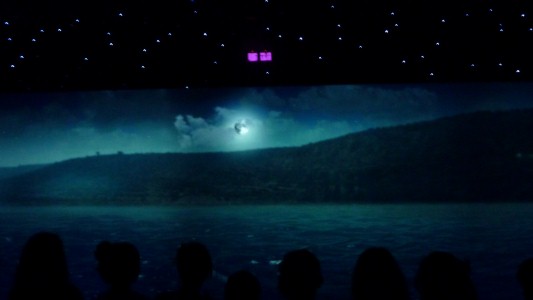
A series of halls following the time-line of the Gallipoli campaign.
Very dynamic - the floor moved to add some reality to the deck of the ship.
And the 3D glasses added reality to the naval shell coming towards us.
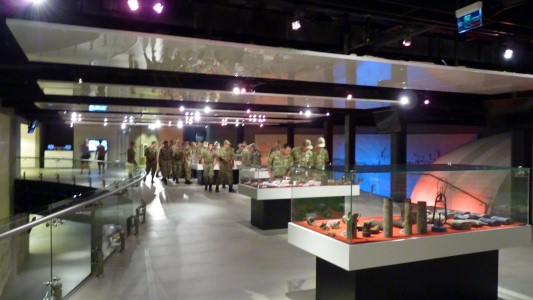
Talking to their commander later he explained it was important for the soldiers "to feel the soil".
And an emphasis on "once we were enemies now we are friends".
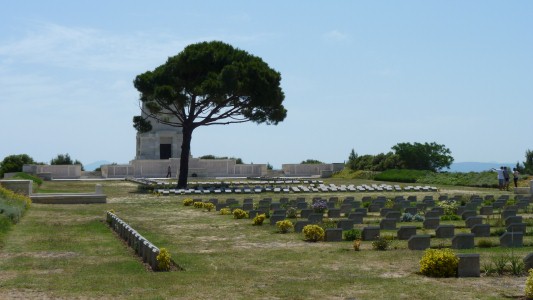
Site of some fierce fighting involving ANZACS.
The campaign lasted from 25th April 1915 to 9th January 1916.
The "Battle of Lone Pine" was predominantly between 6th - 10th August 1915.
The Aussies captured the position in the first few hours but the Turks made many attempts to retake it.
2200 Aus and 4000 Turks dead.
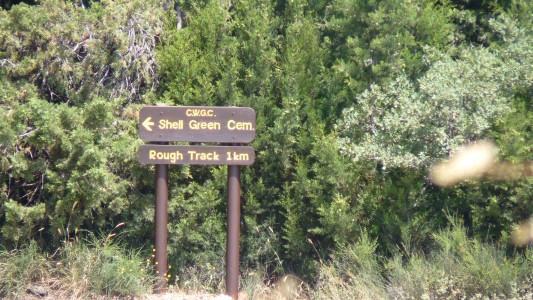
And so there was.
As we walked down it we realised it wasn't at all rough. Easily drivable.
But much more pleasant walking.

Site of game of cricket, lots of shells, and lots of dead.
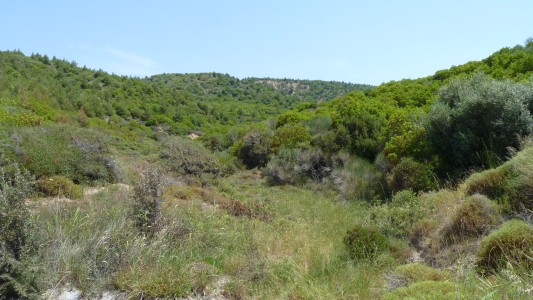
My nephew Mark did some timely research and found a 1982 recording of interview with my Uncle Alfred in the Aus War Museum archives.
Introduced as co-inventor of "the delayed action rifle".
About 50 rifles were set up at Victoria Gully with water dripping into tin cans until they fired. To confuse the enemy and help cover the withdrawal.
Just as the Aussies had advanced up the gully so the Turks would come down.
Uncle was in the last lighter taking men off the beach.
A somewhat "down to earth" interview suggesting that the strategic importance and military value of the invention had been a little blown out of proportion.
Uncle thought "a Furphy Cart full of water" when it was otherwise rationed was sufficient reward.
I never met him but think I would have liked him.
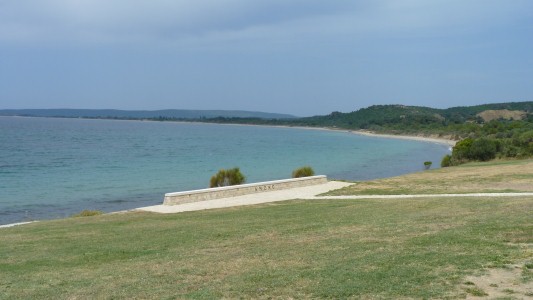
The ANZAC Memorial. Just a little north of Anzac Cove.
Site of dawn services?
In total, about a half million people died during the campaign.
I think I'll always struggle with the overly simplistic concept of "win".
I think I read somewhere it was Ataturk who suggested that every time a soldier dies humanity loses.
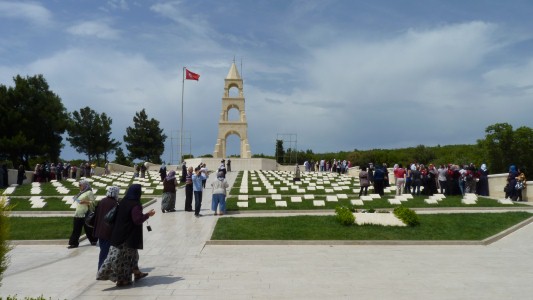
Where the trenches were closest.
We met a few Aussies at the Aus memorials.
Now we met lots of Turks at the Turkish memorials.
Mustafa Kemal Ataturk came to prominence at Gallipoli. Turkey was occupied by the allies after WWI. The war of independence from 1919 to 1923 was successful. Ataturk came to power signalling the end of the Sultanate and the Ottoman era.
National identity is always interesting to me.

Kilitbahir Castle, built around 1462, was closed for renovation / rebuild.
An interesting "three leaved clover" plan.
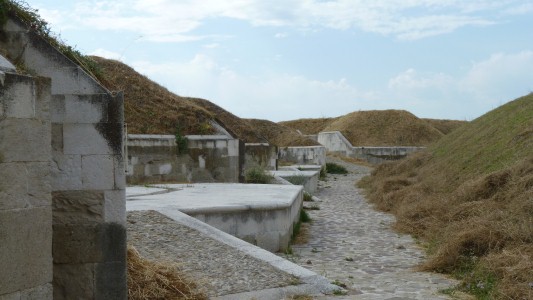
Overlooking the Straits of Canakkale. A narrow point in the Dardanelles.
Multiple gun emplacements and arsenals.
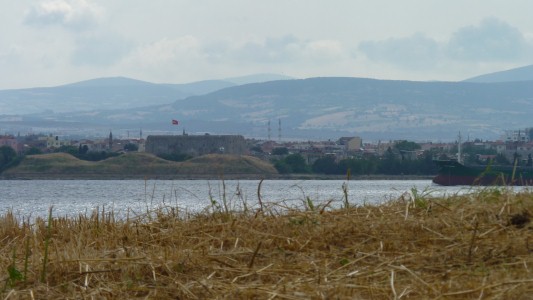
In 1914 the Turks had paid for a couple of English warships which weren't delivered.
A couple of German warships were allowed in to Turkish waters through the Dardanelles.
Captain of one was made Commander of the Turkish (Ottoman) navy.
Turkish navy sailed in to Black Sea and attacked Russian ports on October 29th 1914.
Result ... Turkey no longer neutral, Russia at war.